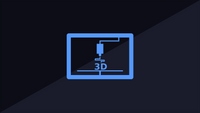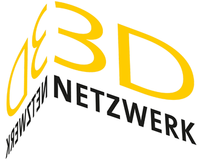3D-Printing: Digitalisation of Manufacturing
Additive manufacturing (AM) – Often referred to as 3D printing – refers to a manufacturing technology which produces physical models based on digital 3D models. Additive manufacturing simplifies the process of producing objects with complex geometry whereas another manufacturing process requires careful analysis of the part geometry before producing.
The basic functional creation of all the additive manufacturing process is the layered creation of the parts. Theoretically, any part can be sliced into layers and can be rebuilt using those layers.
Different Types of 3D Printing Methods
Fused layer Modelling (FLM)
FLM technology is the most popularly used technology in 3D-printers and in 3D-pens. In this technology as the extruder is heated the material is extruded from the nozzle in the form of thin strands and deposited layer by layer according to the cross-section of the model. The nozzle here moves in 3-axis so it moves vertically in z-axis after each layer to deposit the next layer. The part is cooled and solidifies using the cooling fans attached to the extruder head. This process is repeated until the part is printed. Support structures are necessary when creating parts with overhangs. FLM is popular for the production of functional prototypes, conceptual models, and auxiliary tools. It is a technology that can create precise parts and has an exceptional strength to weight ratio. This technology is considered easy to use, environmentally friendly and enables 3D printer users to work with a wide selection of different 3D filaments.
Stereolithography (SLA)
In SLA, a product is formed by layer by layer where a polymer resin is cured under ultraviolet (UV) laser beam. SLA printer accepts a CAD model, and then emits ultraviolet light into a container with a liquid photopolymer, which hardens under the influence of a laser beam. After the plastic has hardened, the stage of the printer is lowered into the tank by a fraction of a millimeter, and the laser forms the next layer until printing is complete. Upon completion of printing, the part is immersed in a bath with a special solution to remove excess elements. Then, the product is placed in an ultraviolet oven for final hardening. Then, if necessary, the supporting structures are manually deleted. Laser technology allows you to produce very detailed parts with high dimensional accuracy and smooth surface finish.
Digital Light Processing (DLP)
DLP technology is similar to SLA given that it also works with photopolymers. DLP uses a digital light projector screen to flash the light on to the entire surface of the photopolymer resin. In DLP the whole layer is formed at once. While SLA uses ultraviolet light, DLP uses a more traditional source - conventional arc lamps. This process leads to pretty impressive print speeds. When there is a lot of light, the resin quickly hardens Compared to SLA printing, DLP provides faster printing times for most parts.
Selective Laser Sintering (SLS)
SLS uses plastic powder to produce solid parts using a laser to sinter the powder particles. This is a 3D printing technology that uses powerful CO2 lasers to fuse particles. The laser sinters the powder metal material in a powder layer, without supports. This is a method in which the laser is used as a power source to form durable 3D-printed objects. SLS does not require the use of support structures, since the printed object is surrounded by unbound powder, the remains of which will need to be manually removed after the printing process is completed. The parts produced in SLS needs a cooldown time to strongly fuse the material together and to get a quality product.
Selective Laser Melting (SLM)
SLM is an additive manufacturing method for 3D printing of metal alloys. Parts are created by melting metal powder particles. As in the SLS process, a metal part will be created layer by layer according to your 3D model. Selective melting of each layer is achieved using a powerful laser and with two scanning mirrors. Selective laser melting requires support structures to fix parts and suspension elements to a construction platform. Supports also provide heat transfer from the melting point, reducing thermal stress and strain. Supports are removed after printing as part of the manufacturing process.
Laminated Object Manufacturing (LOM)
LOM is one of the first additive manufacturing processes which uses a layer by layer lamination of paper material sheets which are cut using a laser. The LOM device uses a continuous sheet of material - plastic, paper or metal, which is pulled through the platform using a feed roller system. During the printing process, layers of plastic or paper are fused or laminated together using heat and pressure, and then cut to the desired shape using a controlled laser or computer-controlled blade. The laser also cuts any excess material in the form of hatching, which facilitates its removal after the complete printing of the object.
Electron Beam Melting (EBM)
Electron beam melting is a technology the electron beam is focused on to the cross section of the layer causing melting and solidification of the layer in a vacuum chamber using an electron beam. It uses the energy source of an electron beam generated by an electron beam gun to melt a metal powder. Parts produced in EBM does not require support materials. In EBM the parts are produced in the vacuum and the process is used only with conductive materials. After the printing process is completed, subsequent heat treatment may be required to increase strength.
Weiterführende Links:




